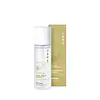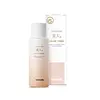What's inside
What's inside
 Key Ingredients
Key Ingredients

 Benefits
Benefits

 Concerns
Concerns

 Ingredients Side-by-side
Ingredients Side-by-side

Water
Skin ConditioningGlycerin
HumectantButylene Glycol
HumectantSnail Secretion Filtrate
Skin ConditioningSodium Hyaluronate
HumectantCentella Asiatica Extract
CleansingNiacinamide
Smoothing1,2-Hexanediol
Skin ConditioningMalt Extract
Skin ProtectingPanthenol
Skin ConditioningPEG-60 Hydrogenated Castor Oil
EmulsifyingEthylhexylglycerin
Skin ConditioningSodium Polyacrylate
AbsorbentAllantoin
Skin ConditioningHydroxyethylcellulose
Emulsion StabilisingAdenosine
Skin ConditioningUlmus Davidiana Root Extract
Skin ConditioningCarum Carvi Fruit Extract
PerfumingDioscorea Villosa Root Extract
Skin ConditioningSalvia Officinalis Extract
AntimicrobialRosa Rugosa Leaf Extract
HumectantAchillea Millefolium Extract
CleansingCamellia Sinensis Leaf Extract
AntimicrobialEucalyptus Alba Leaf Extract
Skin ConditioningSmilax Medica Root Extract
TonicZingiber Officinale Root Extract
MaskingSea Water Extract
Skin ConditioningOryza Sativa Extract
AbsorbentNasturtium Officinale Extract
PerfumingAroma
Hydroxycitronellal
PerfumingLinalool
PerfumingWater, Glycerin, Butylene Glycol, Snail Secretion Filtrate, Sodium Hyaluronate, Centella Asiatica Extract, Niacinamide, 1,2-Hexanediol, Malt Extract, Panthenol, PEG-60 Hydrogenated Castor Oil, Ethylhexylglycerin, Sodium Polyacrylate, Allantoin, Hydroxyethylcellulose, Adenosine, Ulmus Davidiana Root Extract, Carum Carvi Fruit Extract, Dioscorea Villosa Root Extract, Salvia Officinalis Extract, Rosa Rugosa Leaf Extract, Achillea Millefolium Extract, Camellia Sinensis Leaf Extract, Eucalyptus Alba Leaf Extract, Smilax Medica Root Extract, Zingiber Officinale Root Extract, Sea Water Extract, Oryza Sativa Extract, Nasturtium Officinale Extract, Aroma, Hydroxycitronellal, Linalool
Water
Skin ConditioningMethylpropanediol
SolventGlycerin
HumectantNiacinamide
Smoothing1,2-Hexanediol
Skin ConditioningMacadamia Ternifolia Seed Oil
EmollientPolysorbate 60
EmulsifyingCaprylic/Capric Triglyceride
MaskingEthylhexyl Palmitate
EmollientHydrogenated Lecithin
EmulsifyingArginine
MaskingCarbomer
Emulsion StabilisingAllantoin
Skin ConditioningAdenosine
Skin ConditioningXanthan Gum
EmulsifyingDisodium EDTA
Dioscorea Japonica Root Extract
Skin ConditioningButylene Glycol
HumectantDiamond Powder
AbrasivePropanediol
SolventSodium Hyaluronate
HumectantPhytosteryl/Behenyl/Octyldodecyl Lauroyl Glutamate
Skin ConditioningCholesterol
EmollientBrassica Campestris Sterols
EmollientPolyglyceryl-10 Oleate
Skin ConditioningBenzyl Glycol
SolventHydrolyzed Glycosaminoglycans
HumectantPotassium Cetyl Phosphate
EmulsifyingCeramide NP
Skin ConditioningSodium Hyaluronate Crosspolymer
HumectantHydrolyzed Hyaluronic Acid
HumectantHydroxypropyltrimonium Hyaluronate
Ceramide Ns
Skin ConditioningHyaluronic Acid
HumectantCeramide EOP
Skin ConditioningSodium Acetylated Hyaluronate
HumectantEthylhexylglycerin
Skin ConditioningParfum
MaskingWater, Methylpropanediol, Glycerin, Niacinamide, 1,2-Hexanediol, Macadamia Ternifolia Seed Oil, Polysorbate 60, Caprylic/Capric Triglyceride, Ethylhexyl Palmitate, Hydrogenated Lecithin, Arginine, Carbomer, Allantoin, Adenosine, Xanthan Gum, Disodium EDTA, Dioscorea Japonica Root Extract, Butylene Glycol, Diamond Powder, Propanediol, Sodium Hyaluronate, Phytosteryl/Behenyl/Octyldodecyl Lauroyl Glutamate, Cholesterol, Brassica Campestris Sterols, Polyglyceryl-10 Oleate, Benzyl Glycol, Hydrolyzed Glycosaminoglycans, Potassium Cetyl Phosphate, Ceramide NP, Sodium Hyaluronate Crosspolymer, Hydrolyzed Hyaluronic Acid, Hydroxypropyltrimonium Hyaluronate, Ceramide Ns, Hyaluronic Acid, Ceramide EOP, Sodium Acetylated Hyaluronate, Ethylhexylglycerin, Parfum
Ingredients Explained
These ingredients are found in both products.
Ingredients higher up in an ingredient list are typically present in a larger amount.
1,2-Hexanediol is a synthetic liquid and another multi-functional powerhouse.
It is a:
- Humectant, drawing moisture into the skin
- Emollient, helping to soften skin
- Solvent, dispersing and stabilizing formulas
- Preservative booster, enhancing the antimicrobial activity of other preservatives
Adenosine is in every living organism. It is one of four components in nucleic acids that helps store our DNA.
Adenosine has many benefits when used. These benefits include hydrating the skin, smoothing skin, and reducing wrinkles. Once applied, adenosine increases collagen production. It also helps with improving firmness and tissue repair.
Studies have found adenosine may also help with wound healing.
In skincare products, Adenosine is usually derived from yeast.
Learn more about AdenosineAllantoin is a soothing ingredient known for its protective and moisturizingg properties. Because of this, it is often added to products with strong active ingredients.
Studies show higher concentrations of this ingredient can promote wound healing.
Though it can be derived from the comfrey plant, allantoin is produced synthetically for cosmetic products to ensure purity.
Learn more about AllantoinButylene Glycol (or BG) is used within cosmetic products for a few different reasons:
Overall, Butylene Glycol is a safe and well-rounded ingredient that works well with other ingredients.
Though this ingredient works well with most skin types, some people with sensitive skin may experience a reaction such as allergic rashes, closed comedones, or itchiness.
Learn more about Butylene GlycolEthylhexylglycerin (we can't pronounce this either) is commonly used as a preservative and skin softener. It is derived from glyceryl.
You might see Ethylhexylglycerin often paired with other preservatives such as phenoxyethanol. Ethylhexylglycerin has been found to increase the effectiveness of these other preservatives.
Glycerin is already naturally found in your skin. It helps moisturize and protect your skin.
A study from 2016 found glycerin to be more effective as a humectant than AHAs and hyaluronic acid.
As a humectant, it helps the skin stay hydrated by pulling moisture to your skin. The low molecular weight of glycerin allows it to pull moisture into the deeper layers of your skin.
Hydrated skin improves your skin barrier; Your skin barrier helps protect against irritants and bacteria.
Glycerin has also been found to have antimicrobial and antiviral properties. Due to these properties, glycerin is often used in wound and burn treatments.
In cosmetics, glycerin is usually derived from plants such as soybean or palm. However, it can also be sourced from animals, such as tallow or animal fat.
This ingredient is organic, colorless, odorless, and non-toxic.
Glycerin is the name for this ingredient in American English. British English uses Glycerol/Glycerine.
Learn more about GlycerinNiacinamide is a multitasking form of vitamin B3 that strengthens the skin barrier, reduces pores and dark spots, regulates oil, and improves signs of aging.
And the best part? It's gentle and well-tolerated by most skin types, including sensitive and reactive skin.
You might have heard of "niacin flush", or the reddening of skin that causes itchiness. Niacinamide has not been found to cause this.
In very rare cases, some individuals may not be able to tolerate niacinamide at all or experience an allergic reaction to it.
If you are experiencing flaking, irritation, and dryness with this ingredient, be sure to double check all your products as this ingredient can be found in all categories of skincare.
When incorporating niacinamide into your routine, look out for concentration amounts. Typically, 5% niacinamide provides benefits such as fading dark spots. However, if you have sensitive skin, it is better to begin with a smaller concentration.
When you apply niacinamide to your skin, your body converts it into nicotinamide adenine dinucleotide (NAD). NAD is an essential coenzyme that is already found in your cells as "fuel" and powers countless biological processes.
In your skin, NAD helps repair cell damage, produce new healthy cells, support collagen production, strengthen the skin barrier, and fight environmental stressors (like UV and pollution).
Our natural NAD levels start to decline with age, leading to slower skin repair, visible aging, and a weaker skin barrier. By providing your skin niacinamide, you're recharging your skin's NAD levels. This leads to stronger, healthier, and younger looking skin.
Another name for vitamin B3 is nicotinamide. This vitamin is water-soluble and our bodies don't store it. We obtain Vitamin B3 from either food or skincare. Meat, fish, wheat, yeast, and leafy greens contain vitamin B3.
The type of niacinamide used in skincare is synthetically created.
Learn more about NiacinamideSodium Hyaluronate is hyaluronic acid's salt form. It is commonly derived from the sodium salt of hyaluronic acid.
Like hyaluronic acid, it is great at holding water and acts as a humectant. This makes it a great skin hydrating ingredient.
Sodium Hyaluronate is naturally occurring in our bodies and is mostly found in eye fluid and joints.
These are some other common types of Hyaluronic Acid:
Learn more about Sodium HyaluronateWater. It's the most common cosmetic ingredient of all. You'll usually see it at the top of ingredient lists, meaning that it makes up the largest part of the product.
So why is it so popular? Water most often acts as a solvent - this means that it helps dissolve other ingredients into the formulation.
You'll also recognize water as that liquid we all need to stay alive. If you see this, drink a glass of water. Stay hydrated!
Learn more about Water